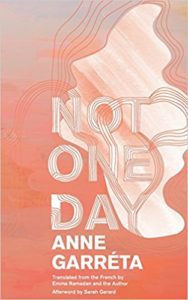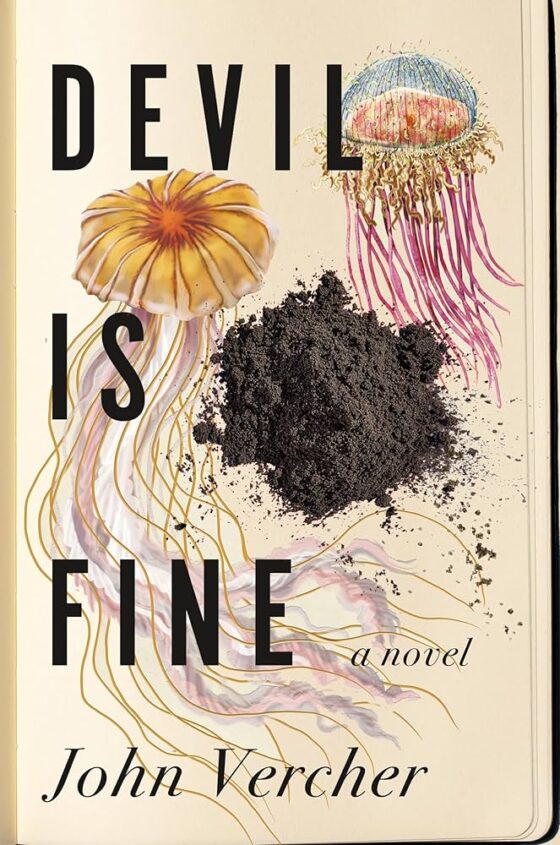
In her Prix Médicis winning novel Not One Day, Anne Garréta claims she will subject herself to the “discipline of confessional writing.” Given its associations with self-indulgence, it’s odd for her to describe confessional writing as a discipline. It’s stranger still for a book of confessional writing to come from a member of the experimental collective the Oulipo and from the writer of Sphinx, which shrouded personal intimacies in a political and constrained syntax. But Garréta applies an academic rigor to the past love affairs she describes in Not One Day, so they become catalysts rather than destinations for her writing.
Members of the Oulipo (French for “Ouvroir de littérature,” or Workshop for Potential Literature) often deploy chance, rules of language, and mathematical forms to produce innovative works. They take as their precept the notion that constrained frameworks spur literary invention. Like Garréta’s novels, their works are often both playful and disciplined. Their methods often create significant erasures and absences, as in the movement’s most famous novel, Georges Perec’s La disparition, a 300-page lipogram that never uses a word with the letter ‘e’ (the English translation by Gilbert Adair, A Void, also follows this rule), or Garréta’s Sphinx, where the excision of gender allows the narrator and the narrator’s love to exist in a Schrodingerian state in which they are simultaneously both and neither genders.
Not One Day doesn’t use such explicit erasure. Still, it plans to follow the Oulipian tradition of using strictures to inspire creativity. The narrator—a somewhat fictional Garréta whose apocryphal identity calls to mind the autofictional narrators of writers like Ben Lerner, Sheila Heti, and Jenny Offill—plans to write for five hours a day for thirty days, each day on a different love affair, which she will pick capriciously. At the end, she will place the accounts in alphabetical order of the women’s names. Her plan provides both Oulipian whimsy and discipline; the rules seem arbitrary, but the adherence to them is meant to be strict.
Garréta reproduces her past love affairs with long asides and perambulating reflections. When one woman inspires equal parts repulsion and desire, the narrator discusses how she “sought out the defects” and “inventoried the adjectives that might vanquish” her desire. Then she begins an extended series of ruminations on attraction, all of which give no better answer than the one she started with: desire “like repulsion, is without reason and defies explanation.”
Often the reflections reveal the narrator’s own preoccupations with literature, interpretation, semantics, and secrecy. In one long aside, Garréta compares novels to car engines. “Literature,” she says, “takes after mechanics more so than religion. You see in it neither transcendence nor the ineffable.” Suggestive of the Oulipian interest in merging literature with the constructed forms of mathematics and sciences, she declares literature is merely “valves, cylinders, ignitions.”
Significantly, the women are more like muses than people. The narrator often removes their particulars. She might say she “inventoried the adjectives,” but she does not give those adjectives. She whittles their names to initials: C*, D*, K*, N* etc. One woman is only the “memory of a body: inscribed in a given space, anchored in light.”
In one telling instance, the woman cannot even be such a memory, because her identity is unknown to the narrator. The narrator learns of her from a friend, who tells her some woman in the narrator’s self-defense class has a crush on her. This knowledge causes her to spend the class with a “sharp, unprecedented consciousness of the weight of bodies, the proximity of faces.” The mystery creates a longing and an absence that allow for the narrator’s expansive imagination to take hold.
Of this unfixed woman she writes, “No certain sign. You are grateful to her for that. The mystery of her identity, the search for signs, the hermeneutic passions it inspired in you, made the semester of self-defense the most arousing erotic experience of your life.” In an Oulipian turn, the woman’s unknown identity infuses the class with a degree of chance. This chance broadens the possibilities: each person with whom the narrator wrestles might be the one to want her, each motion might be a gesture of desire.
Translated by Emma Ramadan, who also translated the syntactically challenging Sphinx, Not One Day matches the elusive, circuitous narratives with baroque and analytical prose. The novel’s elliptical style gives rise to its unsentimental focus on desire, memory, and fantasy as objects that flourish in voids. Desire for something arises when its possession is impossible. People inspire passion by becoming ciphers.
Garréta’s conspicuous absences allow for something to become ubiquitous in a way that its occasional presence cannot. When you premise your work on a rigorous constraint, you fill it with blanks and their potential. The many excisions in Not One Day inspire reflection on all it has removed. The women exist in quantum states, infused with a captivating mysticism. But this style runs the risk of turning such a novel into more of an academic exercise than an immersive experience. Not One Day never escapes the strain of its own writing.
In one notable departure from the investigative style, we learn of K*, who was a friend before she became a lover. The prose becomes vivid and lush, romantic even. We hear of the “incredible light of a late afternoon after a storm that has rinsed the air and rendered a hallucinatory purity to the facades, the trees, all the objects it bathed, leaving behind a pale, bloodless sky, violently intensifying colors, expressing an unbearable darkness from the trunks of trees.” For a moment we’re allowed to experience a scene rather than simply read her explication of it, and it’s a welcome departure from the surrounding abstractions.
Garréta ends her indulgence with a defeatist question. “Could you even render a cubist portrait of her,” she asks, “No, not even. Indecipherable. What machine, what fiction must you invent or construct to manage to capture what would only be an abstract figure of K*, a figure pierced with ellipses.” The machine she describes is the one we hold in our hands, this fiction that we read. Garréta suggests that the novel is only an index; if we are frustrated by it, it’s because she is attempting to produce an intellectually honest inspection of desire. If people cannot be captured, if “there are only erasures,” then might as well seek them in elisions, where their potential remains.




